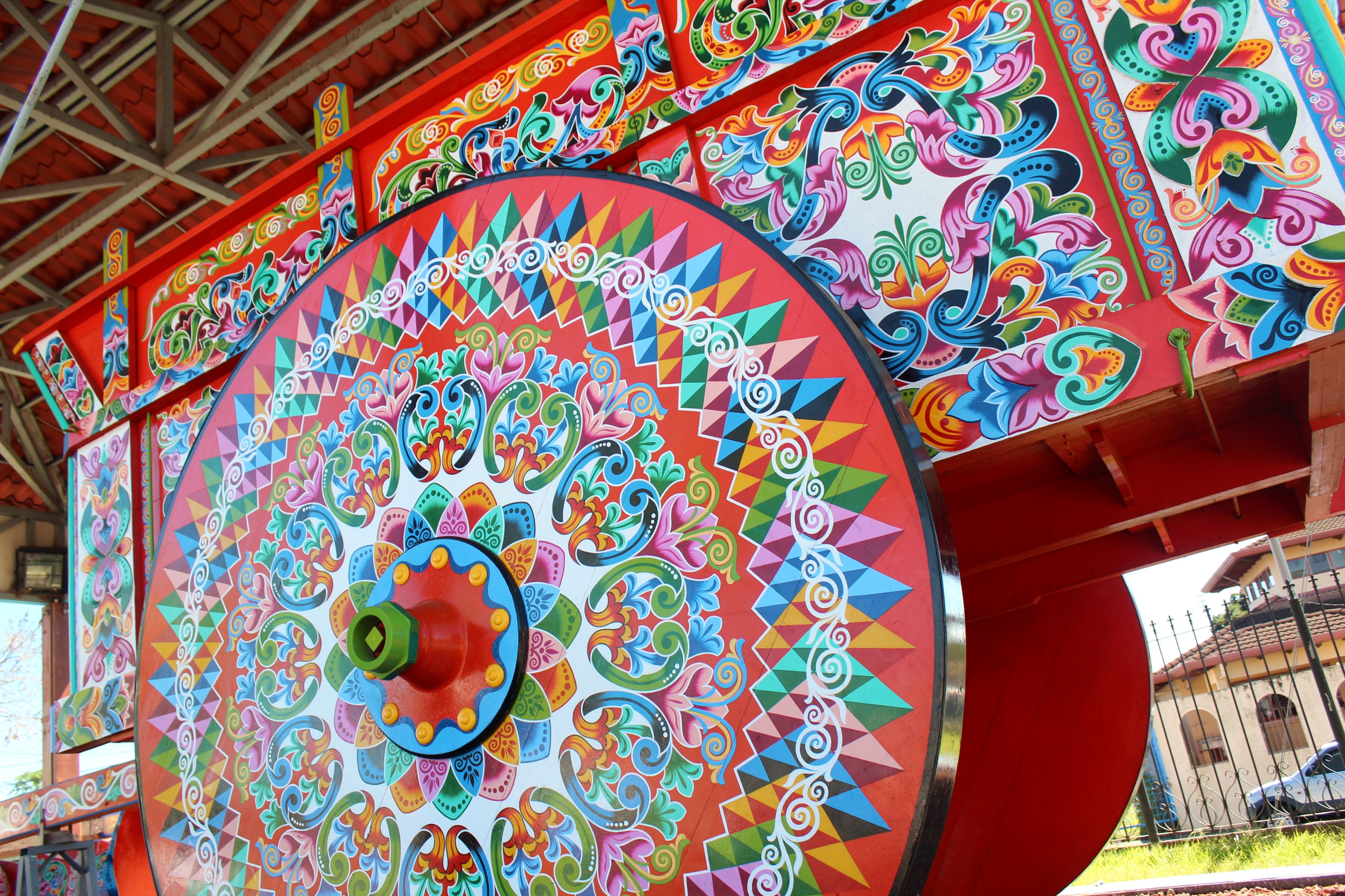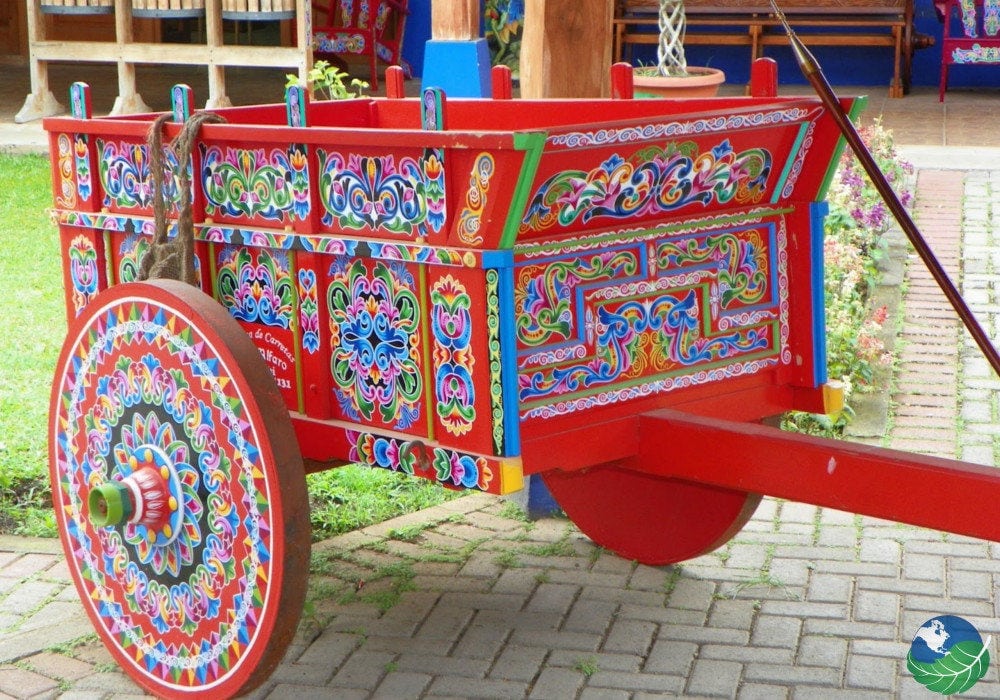The typical cart, symbol of work and White-tailed deer, symbol of national fauna
The typical cart, symbol of work
The wagon was declared a National Symbol on March 22, 1988, through Decree No. 18197-C, published in La Gaceta No. 131 on July 11, 1988 during the presidency of Óscar Arias Sánchez. It is distinguished by its unique designs with which they are painted, with geometric figures, flowers and animals. In fact, although the decorations have obvious similarities, no two carts are painted exactly the same, as there are changes in the details and arrangement of the drawings. It is considered a symbol of national identity, and for this reason, the typical cart was declared a Masterpiece of Oral and Intangible Heritage of Humanity by Unesco on November 24, 2005.
The choice of the typical cart as a national symbol is based on the fact that it is considered to represent the culture of peace and work of the Costa Rican, humility, patience, sacrifice, and perseverance in the quest to achieve the objectives set. Its history dates back to the mid-nineteenth century, when coffee crops expanded, with muddy terrain and steep slopes, during the months of hauling and harvesting. At this time, a wide preference began to be given to solid wheel carts, to avoid the accumulation of mud between the spokes. His inspiration, according to several writers of the time, was born in a device that was used to mount the artillery cannon brought by the Spanish, which they called the gun carriage. The cart was a vital instrument to carry coffee from the Central Valley to the port of Puntarenas, from where it was exported to Europe. Coffee export was, for many years, the main engine of national development.



White-tailed deer, symbol of national
The white-tailed deer was declared a National Heritage Symbol of the Costa Rican Natural Fauna, during the presidency of José María Figueres Olsen, on May 2, 1995, by means of law number 7497. Like the yigüirro and other animals that have been Declared national symbols, their declaration is based on promoting their conservation.
The Odocoileus virginianus is a medium-sized, slender, long-legged deer. Its color is brown and on the inside it is white. Its name comes from its short white tail. In Costa Rica it is difficult to see it, since it is an endangered species due to illegal hunting due to its meat or its ornaments that are exhibited as a trophy, or because, for reasons of urban development, it has been losing its natural habitat.
It can live from sea level to at least 1300 meters above sea level, in the mountains of the Pacific Ocean slope, and in the foothills of the Caribbean slope mountains, where most of the forests have been destroyed. The Guanacaste savannas have been his home, especially the Santa Rosa National Park. It has also been introduced in Isla del Coco. One reason for its ability to adapt to different forest habitats is precisely the diversity of plant materials on which it can feed. 🐂

Comentarios
Publicar un comentario